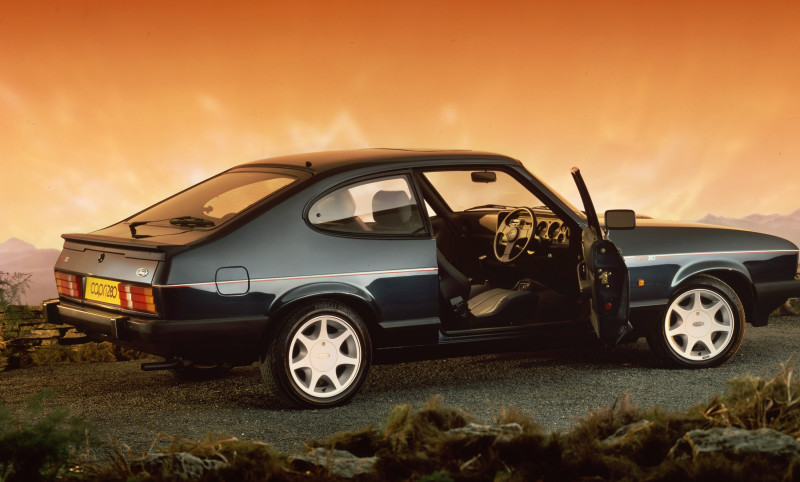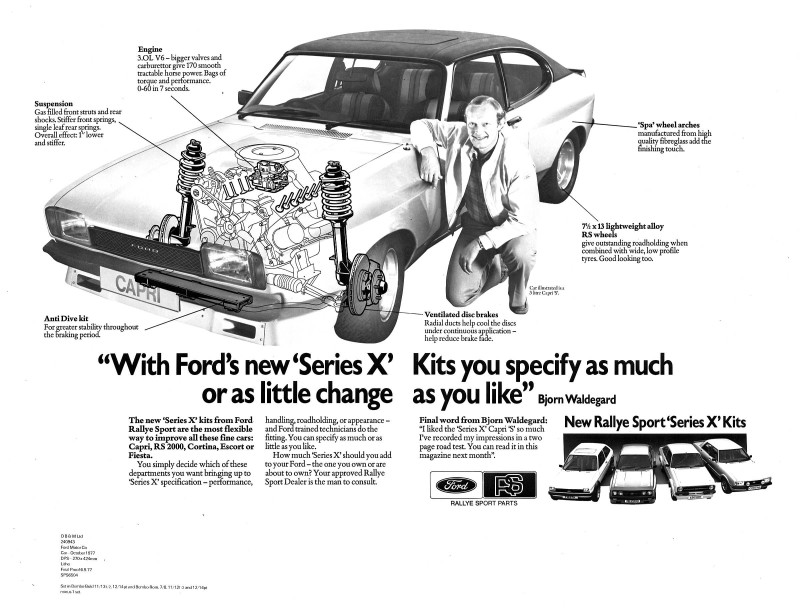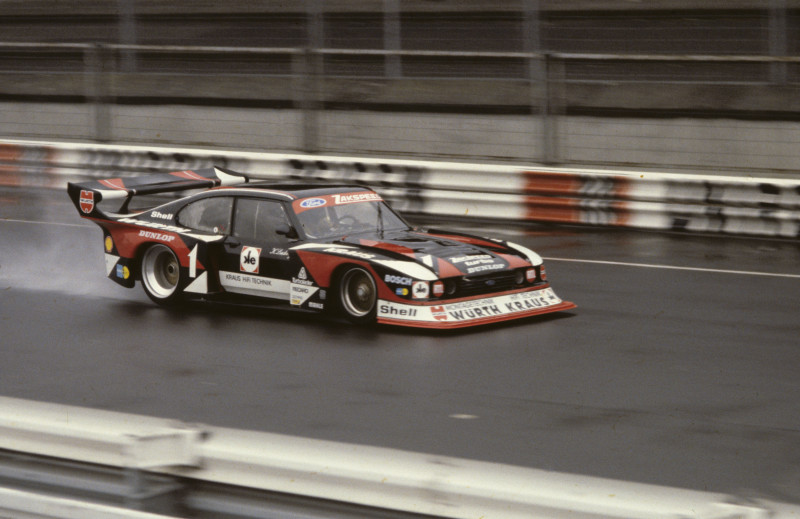Over the three generations available the appeal of the Ford Capri was such that its sales reached 1.9 million units by December 1986
The legend is back: the new all-electric Ford Capri brings today an iconic cult classic name of the American company, redefining its future with its capabilities and completely disruptive character.
With a refined coupe SUV design, the new Capri is an advanced EV that only Ford could build. With sculpted exterior lines for high aerodynamic performance, combined with an uncompromising design in its modern and richly equipped interior, the new Ford Capri comes to redefine the rules of the game while offering unique advantages over the competition thanks to smart next-generation technologies , its class-leading passenger and luggage spaces, its unparalleled range and unparalleled performance.
More information on the new all-electric Ford Capri can be found here
The story of the Ford Capri begins in 1969
Inspired by the huge success of the Mustang, the Ford Capri was created to bring the affordable style and performance of a sports coupe to European customers.
The design of the car began well before its official presentation in 1969 at the Brussels Motor Show, with American designer Philip T. Clarke creating the first designs of the iconic coupe as early as 1965. The Ford Capri was “the car that everyone dream’, as Ford’s advertising slogan at the time famously stated, with its success skyrocketing as soon as it was introduced in 1969. From that year onwards, until the end of the model’s life cycle in late 1986, Ford The Capri remained an automotive icon, with sales totaling 1,886,647 units over its 18 years in production across its three generations.
Ford Capri Mk1 (1969-1974)
The first generation Capri was officially unveiled at the Brussels Motor Show in Belgium in 1969 and became an instant hit with European buyers, recording 400,000 sales in the first two years. The Capri Mk1 was extremely impressive from the start. The first limited editions included the Capri Special which debuted in 1971. Ford’s new coupe was only available in Vista Orange exterior paint and could be equipped with a rear spoiler and louvers on the sloping rear window.
The first Capri was the master of the game in the 1970s not only on the road, but also on the tracks, where it had emerged as an absolute protagonist. The range-topping RS 2600 version of the first-generation Capri won the European Touring Car Championship in both 1971 and 1972 against very strong competition. The sporty Capri RS 3100, introduced in 1974, was also built to compete.
Ford Capri Mk2 (1974-1978)
One of the most significant changes to the Ford Capri Mk2 that was first introduced in 1974 was the rear hatch, which referred to a hatchback model and made the company’s sports model even more practical. Other interventions by Ford contributed to making the interior even more modern and the car overall even more fun to drive.
The 1975 Ford Capri Special was another limited edition version of the model that featured a striking color scheme. Available only in black or white, the Capri Special featured gold stripes on the hood, side panels and rear, as well as gold rims. It also had impressive seat covers, with gold inserts.
At the same time, the ability to personalize the Ford Capri with special options has always been an important part of the model’s appeal. With the ‘Series X’ kits launched for the Capri in 1977 customers could select signature Ford Rallye Sport features to give the car the combination of road performance and looks they desired.
In turn, the Ford Ghia Coins – unveiled at the 1974 Geneva Motor Show – was an “advanced” visionary concept vehicle, which previewed a possible version of the Capri that could make its appearance in 1994 – a time quite distant in the mid-1970s.
Ford Capri Mk3 (1978-1986)
The sleeker and more aggressive design of the Capri Mk3 was just what Ford’s coupe model needed for the new decade looming on the horizon. The four round headlights, joined by horizontal louvres on the grille, were one of the most iconic design features for the new Capri in the 1980s.
The tradition that made the Ford Capri excel in racing in its previous generations has continued with the newest one. The racing Zakspeed Ford Capri was one of the most radical Capris ever, featuring a supercharged engine and heavily flared body panels. This racing car not only won the DRM championship title in 1981 but also served as the inspiration for the ultra-sporty RS Turbo version of the Ford Capri Mk3 introduced in 1981.
The turbocharger wasn’t the only advanced engine technology the Ford Capri Mk3 used. Advanced fuel injection, which made its appearance in an all-new 2.8-litre engine, made the Capri Mk3 even more fuel-efficient while enhancing its performance.
In 1986 Ford marked the end of Capri production with one last limited edition: the Capri 280. This version was produced in just over 1,000 examples, all painted in the striking Brooklands Green livery.
Source: Skai
I have worked as a journalist for over 10 years, and my work has been featured on many different news websites. I am also an author, and my work has been published in several books. I specialize in opinion writing, and I often write about current events and controversial topics. I am a very well-rounded writer, and I have a lot of experience in different areas of journalism. I am a very hard worker, and I am always willing to put in the extra effort to get the job done.













